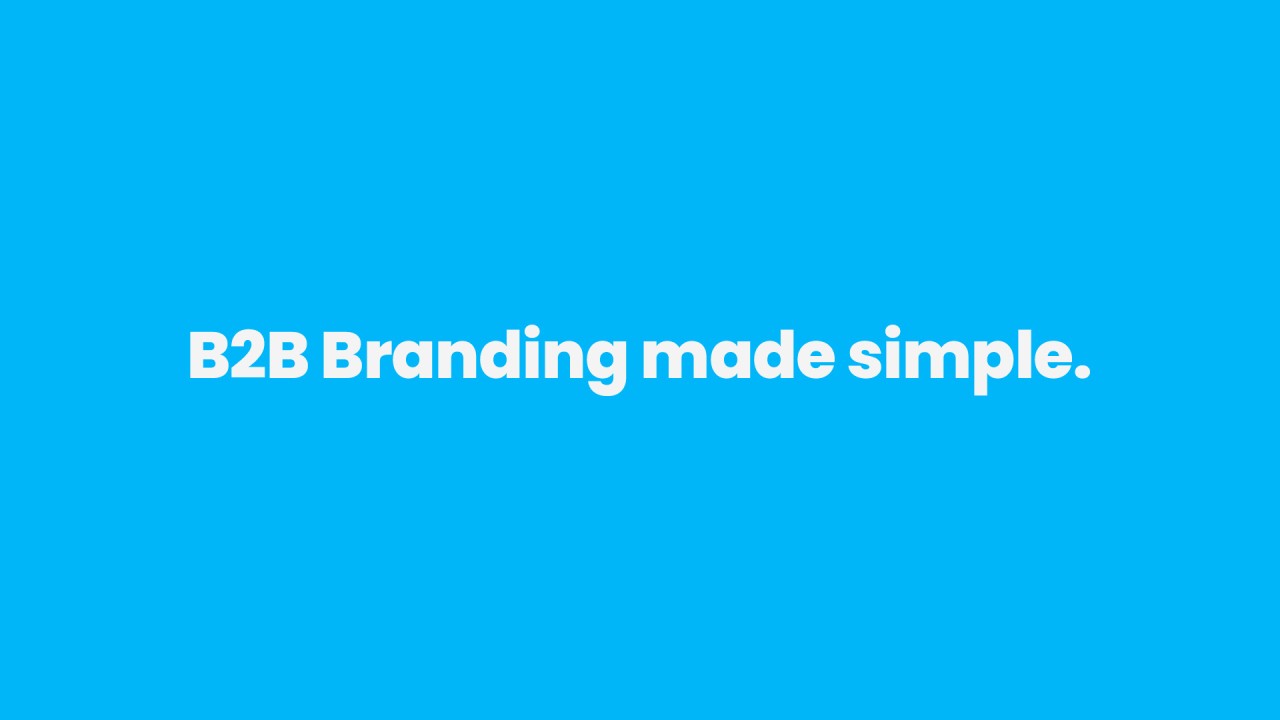by Bill Harper
Late last year I joined TikTok on what amounted to a dare. As a 54 year old strategic marketing agency owner, I was skeptical – right up until 7+ figures in net new business walked through our front door in the first 6 months.
All from TikTok viewers.
In my new role as @brandbosshq I receive many questions each day from people visiting my channel, but one question stands out among the crowd of now more than 97k. The chief question on everyone’s mind seems to be:
Can branding work for B2B companies?
This baffles me beyond belief. Of course it works for B2B companies. How could business leaders not know this? Plenty of evidence exists to prove the point. But then it occurred on me – this is both their single biggest barrier to growth AND their single biggest competitive advantage.
They just don’t realize it – because they were never taught it.
Ask the average CEO about brand and their answer is somewhere in the “That’s for Consumer brands…” zone. They don’t realize that in every other aspect of their lives, their target audiences are consumers. They shop for cars and clothes and watches and socks and stuff to make their house smell good. They make their decisions emotionally – choosing to buy things that they believe will make their lives better, less difficult, more fun, etc.
The exact same things are true in business. They just seem different.
Which brings us to Eric and his email asking me to point him to any “…resources or accounts (TikTok) that can help me better understand marketing in a high compliance field like insurance and financial services?”
Insurance? You mean like GEICO? You mean like how they used a well-heeled lizard and some overly sensitive cavemen to completely reinvent how a category markets? But, I digress.
My first instinct was to give him what he asked for – a list of books that provided the answer wrapped in context and history and insight. But that would have been inefficient. I mean, this guy is seeking clarity, not a reading list. Aren’t we all?
Instead, I shared the following – which I share now with you in the hopes it helps you as much as it did him:
Eric,
Thanks for your patience. Apologies this took so long.
There really isn’t any difference between marketing to consumers and marketing to businesses. At the end of the day, a person – or small group – is responsible for the decision, which means they – like everyone else on the planet – are making that decision emotionally.
Here’s an example:
Bob works for a company that requires TPS reports each week on Friday by EoD. The data for the reports is delivered every Thursday at noon, but the report itself takes two full work days to create. Thus, Bob is routinely late and his boss is angry about it.
Bob does some research and finds that a new software will let him create his report in just a few hours, thereby promising to remove the fear, uncertainty and embarrassment that currently plagues him. Bob buys the software and successfully uses it, which pleases his boss and allows him to remove the negative reputation this issue has created with his team.
Now, did Bob buy the software because of the price, features, benefits, company history, etc.? No. He bought it because it helped him make a problem go away. The other factors may have helped him justify his choice, but they weren’t the driving factors – at all.
This is what businesses miss, and its why their growth is routinely poorer than expected.
Brands have a choice to make: they either make something possible or they make something go away.
FedEx knew this when they launched their “When it absolutely, positively has to be there over night” campaign. They knew that for some businesses, not all – but the ones they knew they could cater to effectively – TIME was the big concern. As such, they hung their proverbial hat on this one promise and created a rock-solid reputation and loyal user-base.
Every brand has this same opportunity. The challenge is that most insist on trying to be everything to everyone instead of being something meaningful to a smaller group who will loyally support them. This choice actually creates the barrier to growth they want so desperately to overcome.
I hope this was helpful. I promise you this brief example will be more efficient in helping you see the opportunity than any 5 books I could recommend. This is as boiled off as it gets.
Let me know if we can be of service further.
Best,
Bill
